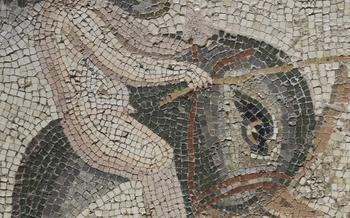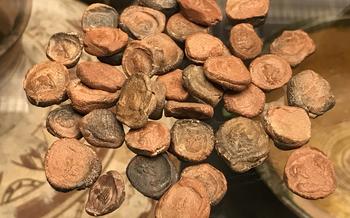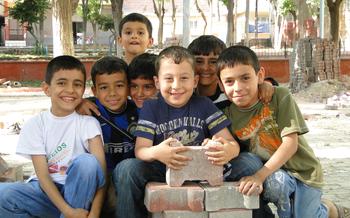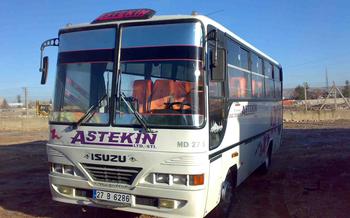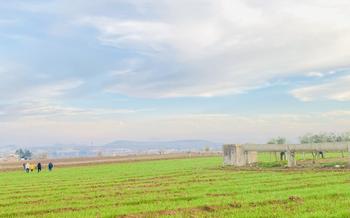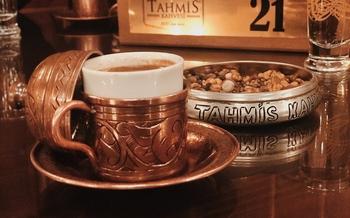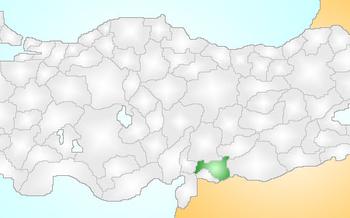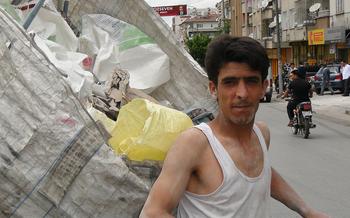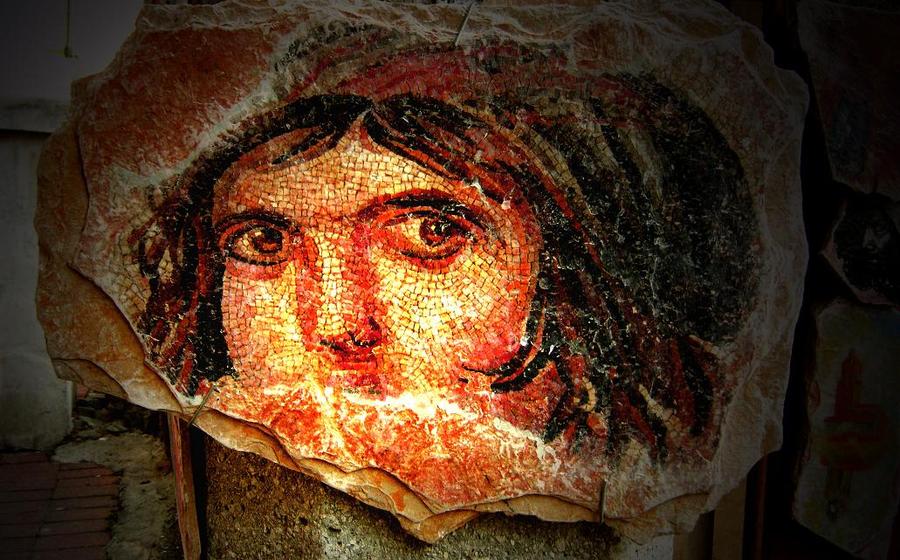
Belkıs/Zeugma Ancient City
- Belkıs/Zeugma Ancient City: A Historical and Cultural Gem
- Exploring the Zeugma Mosaic Museum
- Unveiling the History of Zeugma
- Walking Through the Zeugma Archaeological Site
- Witnessing the Zeugma Mosaics In Situ
- Learning About the Zeugma Excavation Process
- Gaziantep Archaeological Museum: A Treasure Trove of History
- Exploring the City of Gaziantep: A Culinary and Cultural Delight
- Indulging in the Local Cuisine of Gaziantep
- Shopping for Local Handicrafts and Souvenirs
- Visiting the Gaziantep Zeugma Cinema Museum
- Exploring Other Ancient Sites Near Gaziantep
- Tips for Planning Your Visit to Zeugma
- Respecting the Cultural Heritage of Zeugma
- Insider Tip: Unveiling Hidden Gems
Belkıs/Zeugma Ancient City: A Historical and Cultural Gem
Belkıs, also known as Zeugma, is an ancient city located in the Gaziantep province of Turkey. It boasts a rich history dating back to the 3rd century BC, having served as a significant center for the Seleucid and Roman Empires. Zeugma's strategic location on the banks of the Euphrates River made it a crucial trading hub and a melting pot of cultures.
The city reached its peak during the Roman period, becoming one of the most important cities in the Roman province of Syria. Zeugma's wealth and prosperity are reflected in its impressive architecture, particularly its stunning mosaics. These intricate works of art, depicting scenes from mythology, daily life, and religious beliefs, have earned Zeugma the title of "the city of mosaics."
To get to Zeugma, visitors can take a short drive from Gaziantep city center. The ancient city is well-signposted, and there is ample parking available. Once there, visitors can explore the Zeugma Mosaic Museum, the archaeological site, and other attractions that showcase the city's rich history and cultural heritage.
Exploring the Zeugma Mosaic Museum
Step into the Zeugma Mosaic Museum, home to the world's largest collection of Roman mosaics. Prepare to be captivated by the sheer scale and intricate beauty of these ancient masterpieces. Marvel at the stunning "Gypsy Girl" mosaic, an icon of Roman art that has graced countless postcards and art history books. Discover the stories behind the mosaics, ranging from mythological scenes to depictions of everyday life. Learn about the techniques and artistry used by the skilled mosaicists who created these enduring works of art. Immerse yourself in the vibrant colors and intricate details of the mosaics, and gain a deeper appreciation for their significance in the history of art.
Unveiling the History of Zeugma
Zeugma, strategically located at the crossroads of major trade routes, played a pivotal role in ancient times. Its position on the banks of the Euphrates River made it a thriving center of commerce and culture. Zeugma served as a vital link between the Roman Empire and the East, facilitating the exchange of goods, ideas, and technologies.
Explore the remains of Zeugma's fortifications, which once protected the city from invaders. These sturdy walls and towers are a testament to the city's strategic importance. Delve into the ruins of public buildings, such as the impressive Zeugma Amphitheater, which hosted gladiatorial contests and other public spectacles.
Gain insights into the daily lives of Zeugma's inhabitants by visiting the well-preserved Zeugma Baths. These elaborate bathing complexes offered a place for relaxation, socialization, and personal hygiene. Discover the remnants of Zeugma's temples and religious sanctuaries, which provide glimpses into the spiritual beliefs and practices of the ancient city's residents.
Unravel the factors that led to Zeugma's decline and eventual abandonment. Witness the impact of natural disasters, such as earthquakes and floods, which took a toll on the city's infrastructure. Learn about the political and economic changes that contributed to Zeugma's gradual decline, leading to its eventual abandonment in the 7th century AD.
Walking Through the Zeugma Archaeological Site
As you stroll through the Zeugma archaeological site, you'll be transported back in time to the bustling streets and vibrant atmosphere of this ancient city. Explore the impressive Zeugma Amphitheater, where gladiatorial contests and other spectacles once took place, and imagine the roar of the crowd as they cheered on their favorites.
Visit the well-preserved Zeugma Baths, and learn about the bathing rituals and social customs of the Zeugma inhabitants. Admire the intricate mosaics that adorned the bathhouses, depicting scenes of relaxation, beauty, and mythology.
Discover the remnants of Zeugma's temples and religious sanctuaries, which once stood as testaments to the city's diverse religious beliefs. See the remains of the Temple of Jupiter, the Temple of Bacchus, and other sacred structures, and learn about the rituals and ceremonies that took place within their walls.
As you wander among the ruins of Zeugma, let your imagination run wild as you picture the city in its heyday, bustling with trade, filled with laughter and conversation, and echoing with the sounds of everyday life.
Witnessing the Zeugma Mosaics In Situ
Beyond the museum's walls, the ancient city of Zeugma unveils a captivating spectacle – the mosaics in their original context. Scattered amidst the ruins, these stunning artworks once adorned the floors and walls of Zeugma's grand villas, temples, and public buildings.
Walking through the archaeological site, visitors can marvel at the mosaics in situ, gaining a deeper appreciation for their placement and arrangement. The mosaics weren't merely decorative elements; they played a crucial role in enhancing the beauty and grandeur of the city.
In the House of the Athlete, the mosaic of a young athlete preparing for a competition exudes dynamism and energy, capturing the essence of ancient sporting culture. In the Villa of the Birds, the intricate mosaic depicting a variety of birds amidst a lush garden creates a serene and inviting atmosphere.
The Zeugma mosaics offer a glimpse into the daily lives, beliefs, and artistic sensibilities of the city's inhabitants. They showcase a mastery of technique and a vibrant palette that has stood the test of time.
Experiencing these masterpieces in their original setting is a unique and awe-inspiring journey that transports visitors back in time, allowing them to connect with the spirit and artistry of ancient Zeugma.
Learning About the Zeugma Excavation Process
The story of Zeugma's rediscovery and excavation is a fascinating tale of archaeological triumph. In the 1990s, a team of Turkish archaeologists, led by Professor Kutalmış Görkay, embarked on a mission to uncover the ancient city buried beneath the waters of the Birecik Dam reservoir. The excavation process was fraught with challenges, as the team worked against the clock to salvage the precious mosaics before they were submerged forever.
Using innovative techniques, the archaeologists carefully removed the mosaics from their original locations and transported them to the Zeugma Mosaic Museum for conservation and display. The meticulous process involved detaching the mosaics from their foundations, reinforcing them with a special adhesive, and then carefully lifting them onto specially designed frames for transportation.
The dedication and perseverance of the archaeological team were rewarded when they successfully unearthed and preserved over 5 million mosaic tiles, making Zeugma the largest collection of Roman mosaics in the world. The excavation process not only brought to light these stunning works of art but also provided valuable insights into the history and culture of this ancient city.
Gaziantep Archaeological Museum: A Treasure Trove of History
Enrich your understanding of Gaziantep's rich past by visiting the Gaziantep Archaeological Museum, a treasure trove of artifacts that narrate the region's captivating history. Embark on a journey through time as you explore exhibits showcasing remnants from various civilizations, including the awe-inspiring Zeugma. Unearth pottery that whispers tales of ancient craftsmanship, marvel at the intricate designs of jewelry that adorned past generations, and admire sculptures that embody the artistic prowess of bygone eras. Delve deeper into the cultural heritage and traditions of Gaziantep and its environs as you wander through the museum's diverse collection. Immerse yourself in the stories that these artifacts whisper, and gain a profound appreciation for the enduring legacy of this remarkable region.
Exploring the City of Gaziantep: A Culinary and Cultural Delight
Gaziantep, the vibrant city that houses the Zeugma treasures, is not just an archaeological wonder but also a culinary and cultural paradise. As you step away from the ancient ruins, immerse yourself in the bustling streets of Gaziantep, where the air is filled with the enticing aromas of traditional delicacies.
Gaziantep is renowned for its exceptional cuisine, which has earned it the title of "Culinary Capital of Turkey." Indulge in the famous Gaziantep baklava, a flaky pastry filled with chopped nuts and drenched in sweet syrup. Savor the unique flavors of lahmacun, a crispy flatbread topped with minced meat and spices, or tantalize your taste buds with the spicy and tangy flavors of kebabs.
Beyond its culinary delights, Gaziantep boasts a rich cultural heritage that is reflected in its historic bazaar, museums, and mosques. Wander through the labyrinthine alleys of the bazaar, where you can haggle for handmade textiles, exquisite pottery, and gleaming copperware. Visit the Gaziantep Museum of Archaeology to learn about the region's fascinating history and admire artifacts from Zeugma and other ancient civilizations.
As you explore Gaziantep, embrace the warmth and hospitality of its people, who are proud of their city's culinary and cultural traditions. Engage in conversations with locals, learn about their way of life, and experience the genuine Turkish hospitality that makes Gaziantep a truly special destination.
Indulging in the Local Cuisine of Gaziantep
Gaziantep's cuisine is a symphony of flavors, a testament to the city's rich history and cultural diversity. From the world-famous Gaziantep baklava to the savory lahmacun and içli köfte, the city's culinary delights are a must-experience for any traveler.
Discover the Unique Flavors of Gaziantep:
-
Baklava: Gaziantep's signature dessert, baklava, is a flaky pastry filled with layers of nuts and sweetened with syrup. The city is renowned for its baklava, which is considered one of the finest in Turkey.
-
Lahmacun: A thin, crispy flatbread topped with minced meat, vegetables, and spices, lahmacun is a popular street food in Gaziantep. The unique flavor comes from the combination of fresh ingredients and the smoky aroma of the wood-fired oven.
-
İçli Köfte: These deep-fried bulgur dumplings are stuffed with a mixture of minced meat, spices, and nuts. The crispy exterior and flavorful filling make içli köfte a beloved dish in Gaziantep.
Experience the Warmth of Gaziantep's Hospitality:
The people of Gaziantep are known for their warmth and hospitality, which is reflected in their cuisine. As you savor the delicious food, you'll feel the genuine care and pride that goes into every dish.
Savor the Flavors in Local Restaurants and Street Food Stalls:
To truly experience Gaziantep's culinary delights, venture into the city's many restaurants and street food stalls. From traditional kebab houses to modern fusion restaurants, there are options to suit every taste and budget.
A Memorable Dining Experience in Gaziantep:
Indulging in the local cuisine of Gaziantep is more than just a culinary journey; it's a cultural immersion that will leave you with lasting memories. Savor the unique flavors, soak up the vibrant atmosphere, and let the warmth of Gaziantep's hospitality embrace you.
Shopping for Local Handicrafts and Souvenirs
Indulge in a unique shopping experience as you explore the vibrant markets and shops of Gaziantep. Discover an array of handmade textiles, intricate pottery, gleaming copperware, and an assortment of traditional crafts that reflect the city's rich cultural heritage. Support local artisans by purchasing their beautiful creations, taking home a piece of Gaziantep's essence. Experience the joy of bargaining and haggling in the traditional Turkish style, immersing yourself in the lively atmosphere of the bustling bazaars. From colorful carpets to delicate jewelry, each item holds a story, waiting to be cherished and treasured.
Visiting the Gaziantep Zeugma Cinema Museum
Gaziantep Zeugma Cinema Museum: A Journey Through Turkish Cinema
Nestled in the heart of Gaziantep, the Zeugma Cinema Museum offers a captivating journey through the history of Turkish cinema. This unique museum pays homage to the city's significant role in the development of the Turkish film industry.
As you step into the museum, you'll be transported back in time to the early days of Turkish cinema. Exhibits showcase the pioneers of the industry, from legendary actors and directors to influential producers. Learn about the challenges they faced and the passion that drove them to create groundbreaking films that shaped Turkish cinema.
The museum's collection includes rare photographs, posters, and film equipment, providing a glimpse into the behind-the-scenes world of Turkish filmmaking. You'll also have the opportunity to watch classic Turkish movies in the museum's theater, immersing yourself in the stories and performances that captivated audiences for decades.
A visit to the Gaziantep Zeugma Cinema Museum is a must for anyone interested in the history of Turkish cinema. It's a place where you can celebrate the achievements of Turkish filmmakers, appreciate the evolution of the industry, and gain a deeper understanding of the cultural significance of Turkish cinema.
Insider Tip:
If you're a film buff, be sure to check the museum's schedule for special screenings and events. They often host film festivals, retrospectives, and discussions with renowned filmmakers, offering a unique opportunity to engage with the Turkish film community.
Exploring Other Ancient Sites Near Gaziantep
Beyond the wonders of Zeugma, the region surrounding Gaziantep is dotted with other captivating ancient sites that offer a glimpse into the rich history of this region.
Nizip: Just a short drive from Gaziantep, the city of Nizip boasts impressive Roman ruins, including a well-preserved amphitheater, a colonnaded street, and the remains of a temple dedicated to the Roman emperor Trajan.
Doliche: Located about an hour's drive from Gaziantep, Doliche is home to the ancient city of Doliche, renowned for its stunningly preserved temple dedicated to the god Jupiter. This impressive structure, known as the Temple of Jupiter Dolichenus, features intricate carvings and sculptures that offer a glimpse into the religious practices of ancient times.
Rumkale: Perched atop a rocky hill overlooking the Euphrates River, Rumkale is a fascinating historical site that combines Byzantine and Islamic influences. Explore the remains of a medieval fortress, a church, and a mosque, and enjoy breathtaking views of the surrounding landscape.
These ancient sites, each with its unique charm and historical significance, offer a wonderful opportunity to delve deeper into the rich cultural heritage of Gaziantep and its surroundings.
Tips for Planning Your Visit to Zeugma
To make the most of your visit to Zeugma, careful planning is essential. Here are some tips to ensure a smooth and enjoyable experience:
-
Choose the right time to visit: The best time to visit Zeugma is during the shoulder seasons (spring or fall), when the weather is pleasant and the crowds are smaller. Summer months can be hot and crowded, while winters can be cold and rainy.
-
Wear comfortable shoes: Zeugma involves a lot of walking on uneven surfaces, so it's essential to wear comfortable shoes. Avoid high heels or sandals, as they can make it difficult to navigate the site.
-
Bring a camera: The Zeugma mosaics and ruins are visually stunning, so bring a camera to capture their beauty. Remember to be respectful and avoid using flash photography, as it can damage the mosaics.
-
Allow sufficient time: Both the Zeugma Museum and the archaeological site are extensive, so allow sufficient time to explore them properly. Plan to spend at least half a day at Zeugma, if not a full day.
Respecting the Cultural Heritage of Zeugma
As you explore the ancient city of Zeugma, it is essential to remember the profound historical significance it holds. This remarkable site is a testament to the ingenuity and artistry of ancient civilizations. To ensure its preservation for future generations, it is crucial to treat Zeugma with the utmost respect. Refrain from touching or damaging the mosaics and ruins, as they are irreplaceable relics of the past. Follow the guidelines and instructions provided by the museum and site authorities, and be mindful of your actions to minimize any potential impact on the site. By doing so, you contribute to the preservation of Zeugma's legacy and allow others to appreciate its splendor for years to come.
Insider Tip: Unveiling Hidden Gems
Beyond the main attractions of Zeugma, there's a world of hidden gems waiting to be discovered. Engage with local guides or museum staff, who can point you towards lesser-known mosaics or ruins that may not be on the typical tourist trail. Explore the surrounding countryside, where you might stumble upon ancient sites or traditional villages that offer a glimpse into the region's rich past. Strike up conversations with the locals to learn about their traditions and customs, gaining a deeper understanding of the vibrant culture that permeates Gaziantep and its environs. Immerse yourself in the local way of life, embracing the warmth and hospitality of the people as you uncover the hidden treasures that make this region so special.
